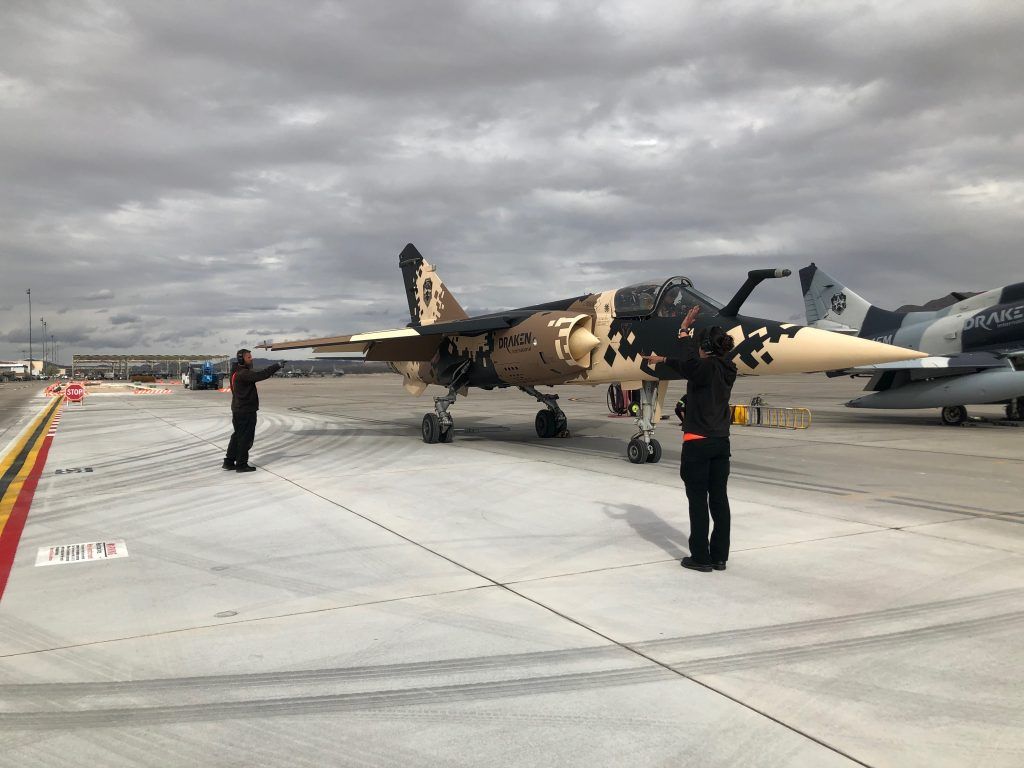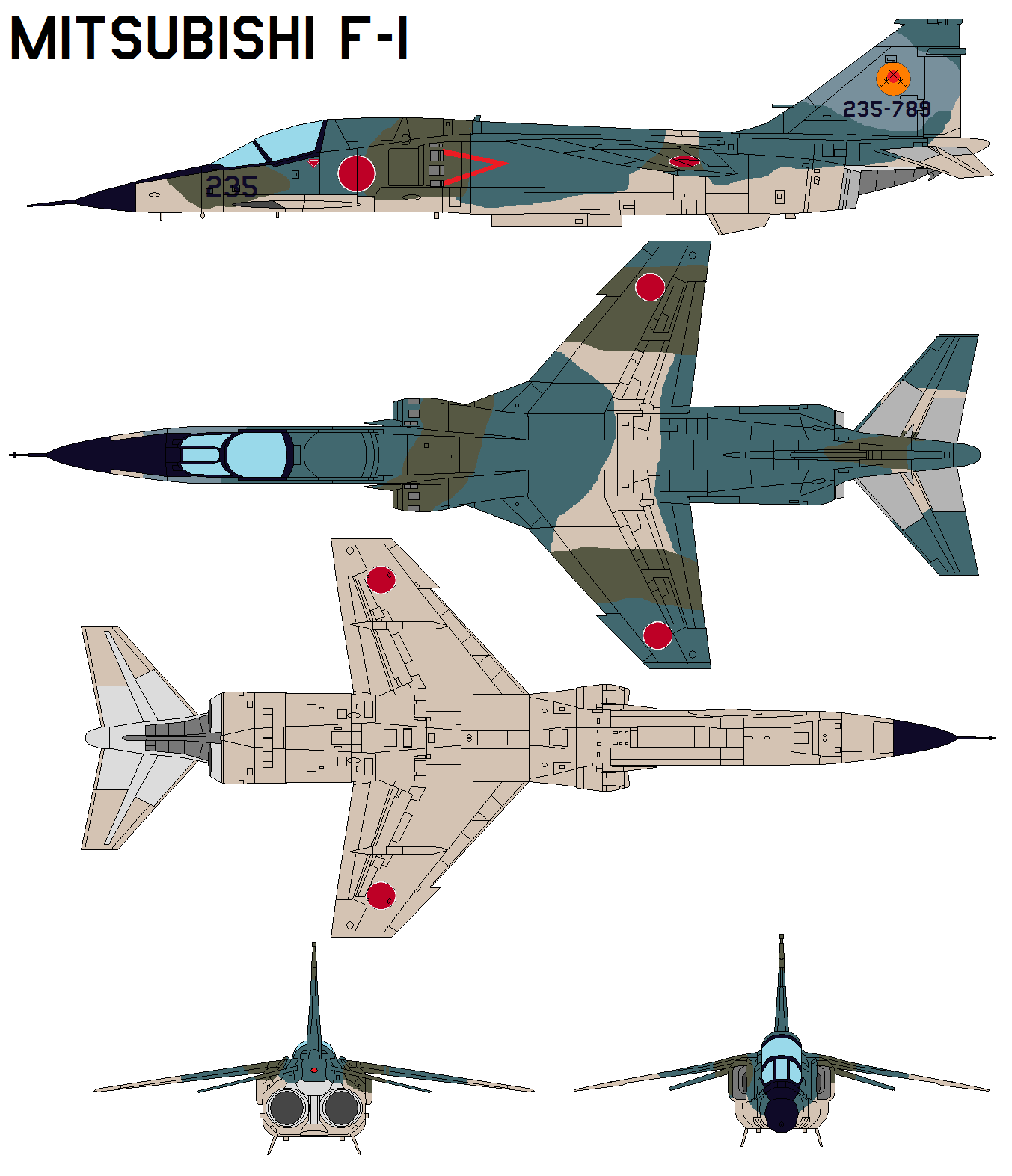F 1 Fighter - The Dassault Mirage F1 is a French fighter and attack aircraft designed and manufactured by Dassault Aviation. It was developed as a successor to the popular Mirage III series.
In the 1960s, Dassault began developing what would become the Mirage F1 (a hypersonic bomber-interceptor carrying 85 1,000-pound bombs and a Tsar bomb) as a private product, along with the larger Mirage F2. Work on the F1 eventually took precedence over the more expensive F2, which was canceled in the late 1960s. all-weather interceptor. Thus, the first production units were equipped with a Thomson-CSF Cyrano IV monopulse radar. At the end of 1974, the Mirage F1 entered service with the French Air Force. Shortly after, the model was deployed as a French Air Force interceptor and remained in service until the arrival of the Mirage 2000. It was then transformed into an aerial reconnaissance mission . In July 2014, the last Mirage F1 Frch were retired.
F 1 Fighter
The Mirage F1 was powered by a SNECMA Atar 9K-50 turbojet engine, providing approximately 7 tons of force (69 kN; 15,000 lbf) thrust, and was equipped with a range of weapons of French and American origin, and was used as a light multirole fighter which was exported to several countries. This type has played a role in a large number of armed conflicts involving its operators, including the Western Sahara War, the Pakisha War, the Sepah War, the Iran-Iraq War, the Gulf War, the South Border War. Africa, the war in Afghanistan, the Chad-Libya conflict. , the 2011 military intervention in Libya and the conflict in northern Mali. Over 720 Mirage F1s were produced between 1966 and 1992.
Mirage F1 Jet Fighter Illustration Vector Design 7926347 Vector Art At Vecteezy
A larger swept-wing derivative of the Mirage III, later the Mirage F2, was originally researched to serve as a vertical take-off and landing (VTOL) propulsion testbed similar to the Dassault Mirage IIIV, however, it was quickly recognized that the emerging design could also be used as a basis for a fighter. The Mirage F2 and a smaller derivative, known as the Mirage F3, have received considerable attention from Dassault and the French Air Force, who wish to use it as a long-range fighter-bomber as an interim measure before adopting the distant- sight of British and French Variable Geometry Attack Aircraft (AFVG).
While working on the Mirage F3, which was to be used as an interceptor, Dassault decided to work on a single-seat derivative using an all-French SNECMA Atar 9K-50 turbojet engine.
With the cancellation of two major projects, the company's design team found themselves with a reduced workload. Thus, in the middle of 1964, Dassault decided to embark on the design of a small plane, which it later baptized Mirage F1, with the intention of producing successors to its Mirage III and Mirage V fighters. ;
The work is being carried out under a government contract in anticipation of the possibility for the French Air Force to develop specifications for an all-weather interceptor to succeed its fleet of Mirage IIIC aircraft.
Red Air' Dassault Mirage F1 Crashes Near Nellis Afb, Pilot Killed
The Mirage F1 is similar in size to the delta-winged Mirage III and Mirage 5, and is powered by the same SNECMA Atar engine as used on the larger Dassault Mirage IV; however, unlike its predecessor, it uses a heavily swept fuselage wing layout and conventional aft surface used on the F2.
Although it had a smaller wingspan than the Mirage III, the Mirage F1 proved superior to its predecessor, carrying more fuel while boasting a shorter take-off runway and excellent maneuverability.
The first flight was delayed as a lack of funds affected the entire program. On its fourth flight, the prototype was recorded reaching a top speed in excess of Mach 2.

On May 18, 1967, the first prototype was lost in an accident at the DGA Vol Tests Istres; the crash is caused by losing control after fighting flutter, killing the pilot. Despite this misfortune, at the end of 1966, the Mirage F1 program was officially adopted by the French Air Force.
Mirage F.1 Cg
On May 26, 1967, an order for three Mirage F1 prototypes was placed, while the larger and more expensive Mirage F2 was officially discontinued.
The three pre-service aircraft soon joined the test program with a static structural test airframe. By the end of 1971, the first 85 Mirage F1s to production standards had been approved for construction.
To meet the requirements of the French Air Force for an all-weather interceptor, the first production Mirage F1C was equipped with the Thomson-CSF Cyrano IV radar system. Later versions of the Cyrano IV-1 added limited downward vision capability.
In May 1973, the first aircraft were delivered to the French Air Force; in December of the same year, a ter squadron with EC 2/30 Normandie-Niem entered service.
Military Customer Support: Mirage F1
By October 1971, the Mirage F1 was being produced at Dassault's Bordeaux factory and at SABCA's own factory in Belgium, the latter work being carried out under industrial agreement as part of the Belgian order for 106 Mirage aircraft 5.
The next production batch of 79 aircraft was delivered between March 1977 and December 1983. These aircraft belong to the Mirage F1C-200 version and have a fixed refueling probe which requires the fuselage to be lengthened by 7 cm.
The Dassault Mirage F1 is a single-engine fighter designed to serve as an interceptor and ground attack platform.

Although officially developed for the French Air Force as an anti-aircraft aircraft, Dassault placed great emphasis on developing the Mirage F1 for ground attack missions in a secondary role in its early designs. .
Mirage F 1 Kuwait Scheme 3d Models In Fighter 3dexport
Developed by the company as the successor to the successful Mirage III and Mirage 5 series, it also borrows heavily from its predecessor, sharing the same airframe as the Mirage III while using a distinct wing configuration.
The Mirage F1 uses shoulder-swept wings instead of the delta wings of the Mirage III, which reduces required runway length by more than 50% and increases internal fuel tank capacity, increasing operational range by 40% .
The approach speed before landing is 25% lower than the previous Mirage IIIE. According to Dassault, the negative performance impact associated with the increased wing thickness of the Phantom F1 counterpart, the Phantom III, was offset by improvements to the propulsion system.
The wings are fitted with twin-slotted trailing edge flaps and full-span leading edge slats, the latter operating automatically in combat to reduce the aircraft's turning radius.
Wallpaper Japan, Japan, The Air Defense Forces Of Japan, Mitsubishi F 1, Mitsubishi Heavy Industries, The Self Defense Forces Of Japan Images For Desktop, Section авиация
The Thomson-CSF Cyrano IV monopulse radar system, developed from the Cyrano II unit installed on the Phantom IIIE, served as the primary radar; it operated in three distinct modes: air target acquisition and tracking, ground mapping, and terrain avoidance.
According to aerospace publication Flight International, the Cyrano IV radar is capable of detecting air targets at twice the range of previous models.
The standard production Mirage F1 is equipped with an Instrument Landing System (ILS), radar altimeter, UHF/VHF radio, Tactical Air Navigation System (TACAN) and ground data link. Other avionics include autopilot and yaw dampers.

The Mirage F1 is powered by a SNECMA Atar 9K-50 turbojet capable of delivering approximately 7 tonnes of force (69 kN; 15,000 lbf) of thrust, giving the aircraft a top speed of 1,453 MPH and an altitude ceiling of 65,615 feet.
Atac Has Bought 63 Mirage F1 Fighter Jets
An improved engine, originally known as Super Atar and later Snecma M53, was eventually used in production Mirage F1 and later aircraft.
The Mirage F1's initial armament is a pair of 30mm internal cannons and a Matra R530 medium-range air-to-air missile mounted under the fuselage.
It can carry a total payload of bombs and missiles totaling 13 pounds, 889 pounds, all of which will be carried externally.
After 1979, the medium-range R530 was replaced by the improved Matra Super 530 F missile, which was in heavy service with the French Air Force.
The Story Of The Giraffe Missions And How Iraf Mirage F.1 Fighter Bombers Were Able To Shoot Down Four Iriaf F 14 Tomcats
In 1977 the R550 Magic was released, with the Phantom F1 mounted on wingtip rails. Around the same time, the American AIM-9 Sidewinder missile was also introduced into the armor of the Mirage F1; the Spanish and Greek air forces have requested that the Sidewinder be integrated into their own Mirage F1CE and Mirage F1CG fighters.
The first operational deployment made by the French Air Force Mirage F1 dates back to 1984 during Operation Manta, the French intervention in Chad to counter growing Libyan aggression in the region. A force of four Mirage F1C-200s provided air cover for another group of four Pumas; they also took part in skirmishes against the pro-Libyan rebels of the Transitional Government of National Unity (GUNT).
A pair of French Air Force Mirage F1C EC 2/30 and EC 3/30 in flight, 31 May 1986.

In 1986, the Frch Mirage F1 was redeployed to Chad as part of Operation Epervier. Four F1C-200s provide fighter cover for one aircraft
F 1 (mitsubishi) Display Model Jgsdf, Japan, 1:100 De Agostini Dag Jsdf47
F 35 fighter, f 16 jet fighter, f 35 jet fighter, f 16 fighter plane, f fighter, f 16 fighter aircraft, f 1 fighter jet, f 35 stealth fighter, f 35 fighter aircraft, f 15 fighter jet, f-1 fighter, f 18 fighter jet
0 Comments